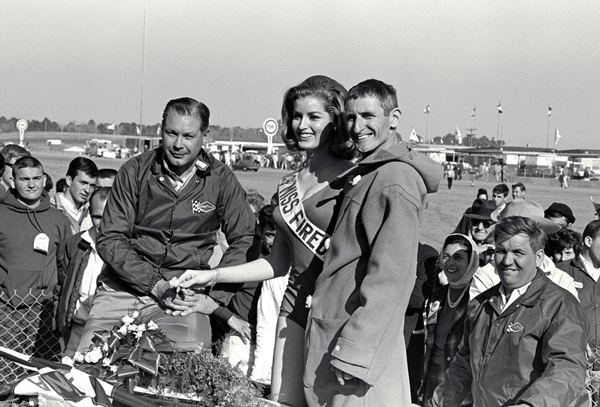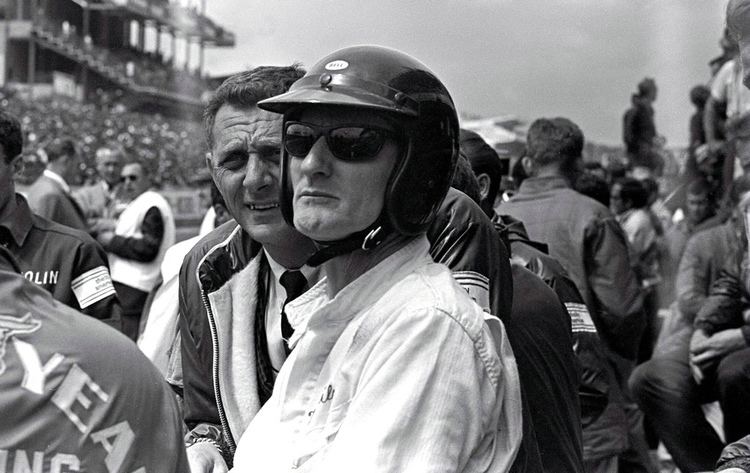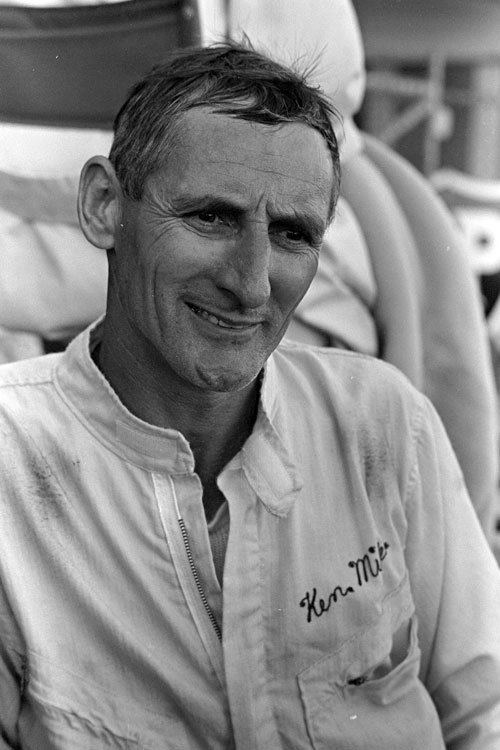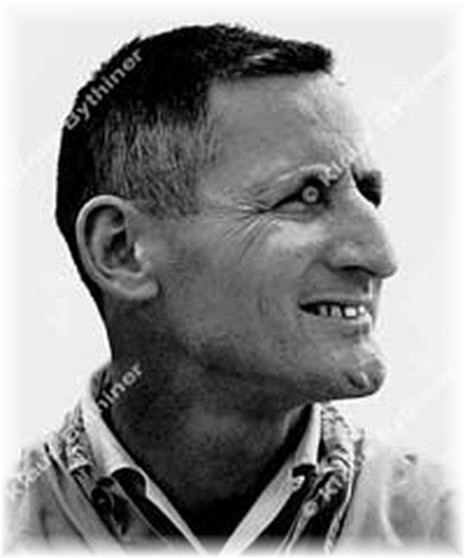Nationality British Name Ken Miles | Role Race car driver | |
 | ||
People also search for Walter Hayes, Elizabeth Hayes, Jeremy Hayes, Harriet Hayes, Richard Hayes | ||
Shelby cobra racing ken miles
Kenneth Henry Miles (1 November 1918 – 17 August 1966) was a British born, naturalised American sports car racing engineer and driver best known for his career in the USA and with American teams on the international scene.
Contents
- Shelby cobra racing ken miles
- Dave macdonald ken miles run 1 2 in shelby cobras at dodger stadium 3 63
- Career
- Test drivercar developer
- Death
- Award
- Complete Formula One World Championship results
- References

Dave macdonald ken miles run 1 2 in shelby cobras at dodger stadium 3 63
Career

Miles raced motorcycles before he served as a tank Sergeant in the British Army in World War II.

After the war he raced Bugattis, Alfa Romeos and Alvises with the Vintage Sports Car Club. He then turned to a Ford V8 Frazer-Nash.

Miles then moved from England to the Los Angeles, California area. In 1953 he won 14 straight victories in SCCA racing in an MG-based special of his own design and construction.
For the 1955 season, he designed, constructed and campaigned a second special based on MG components that was known as the "Flying Shingle". It was very successful in the SCCA F modified class on the west coast. Miles raced the "Flying Shingle" at Palm Springs in late March, finishing first overall against veteran driver Cy Yedor, also in a MG Special, and novice driver, actor James Dean in a Porsche 356 Speedster. Miles was later disqualified on a technical infraction because his fenders were too wide, thus allowing Yedor and Dean to get 'bumped up' to first and second. During 1956, Miles raced Johnny von Neumann's Porsche 550 Spyder at most of the Cal Club and SCCA events.
For the 1957 season (in cooperation with Otto Zipper), Miles engineered the installation of a Porsche 550S engine and transmission in a 1956 Cooper chassis and body. It was the second successful race car to be known on the West Coast as "the Pooper", the first being an early 1950s Cooper chassis and body powered by a Porsche 356 power train that was built and campaigned by Pete Lovely of Tacoma, WA. The resulting car dominated the F Modified class of SCCA on the west coast in the 1957 and 1958 seasons with Miles driving.
Because of his great skill and talent both as a driver and as a mechanic and engineer, Miles was a key member of the Shelby/Cobra race team in the early 1960s. He was affectionately known by his American racing crew as "Teddy Teabag" (for his tea drinking) or "Sidebite" (as he talked out of the side of his mouth.)
In 1966 he won the 24 Hours of Daytona (pictured) with Lloyd Ruby, and the 12 Hours of Sebring in the Ford GT Mk.II. Miles was leading near the end of the 1966 24 Hours of Le Mans, when Ford management, desiring a publicity photo of the three Mk.IIs crossing the finish line together, ordered him to slow down to cross the line together with the second place car, driven by Bruce McLaren and Chris Amon, and the third place car. It is rumoured that Miles, bitter at this perceived slight by his employers, after his considerable commitment to the Ford racing programme, issued a form of protest by allowing Ford #2 car, driven by Bruce McLaren and Chris Amon, to cross the line first and be declared the winner. Miles was thus denied the unique achievement of winning Sebring, Daytona, and Le Mans in the same year.
Test driver/car developer
His early career got Carroll Shelby's attention, who hired Miles as a test driver in the early 1960s. Miles helped Shelby develop the Shelby Cobra. He also is credited with helping Shelby develop the GT40 and the Mustang GT350.
Death
The Ford J-car was intended to be the successor to the all-conquering Ford GT Mk.II and, despite reliability problems, showed potential in the springtime Le Mans trials. The dark spot that came of the springtime trials was the death of Walt Hansgen in a Mk.II. Ford management made the decision to shelve the J-car and focus on the proven Mk IIs, and little development was done for the rest of the 1966 World Sports Car Championship season. Finally, in August 1966, Shelby American resumed testing and development work with Miles serving as primary test driver. The J-car featured a breadvan-shaped rear section that experimented with Kammback aerodynamic theories, as well as a revolutionary (but untested) honeycomb panel design that was supposed to both lighten and stiffen the car, but the design remained unproven with high-speed prototype sports cars.
After most of a day of testing at Riverside International Raceway in the brutally hot Southern California desert summer weather, Miles approached the end of the track's 1-mile (1.6 km), downhill back straight at top speed (200-plus mph) when the car suddenly looped, flipped, crashed and caught fire. The car broke into pieces and ejected Miles, killing him instantly. The car had suffered precisely the sort of crash damage the honeycomb construction was designed to prevent. As a result, the aerodynamics of the J-car were heavily modified to correct the rear-end lift generated at race speeds. Ford officials, under pressure after the second of two fatal accidents in the programme in five months, also ordered a NASCAR-style steel tube rollover cage to be installed in future versions of the car. The death of 47 year old Miles, following that of 46 year old Hansgen led Ford to favor younger drivers in subsequent race entries. The significantly revised J-car, renamed the Ford Mk IV, won the only two races in which it was entered: the 1967 Sebring (Fla.) 12 Hours, and the 1967 24 Hours of Le Mans. The steel roll cage in the Mk IV (mandated as a direct result of Miles's death) probably saved the life of Mario Andretti, who crashed violently during the 1967 24 Hours of Le Mans but escaped with minor injuries.
Award
Complete Formula One World Championship results
(key)
